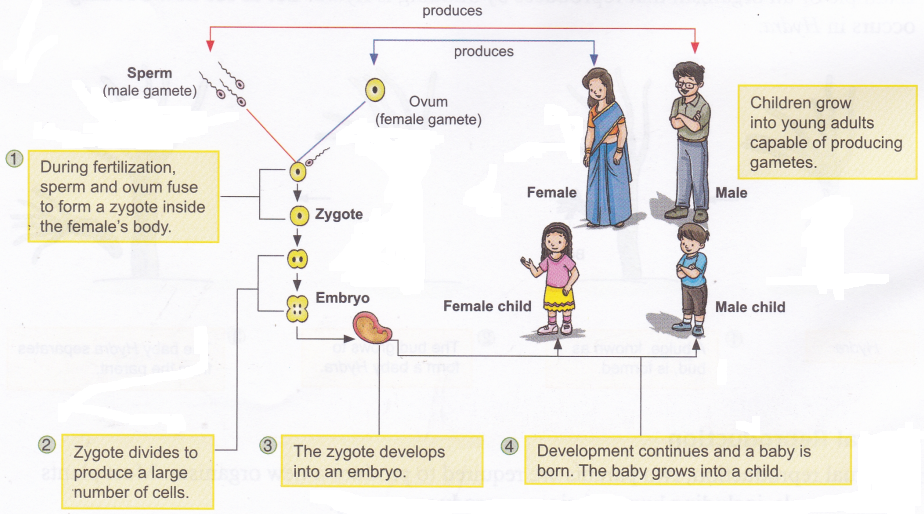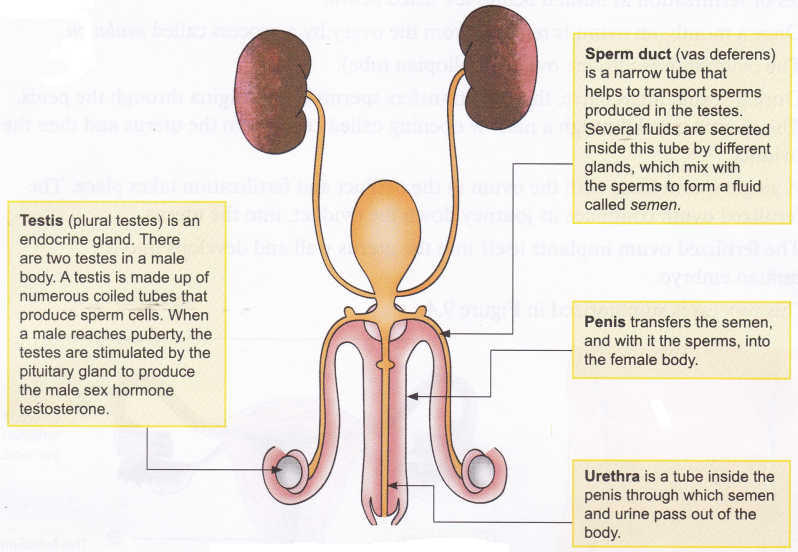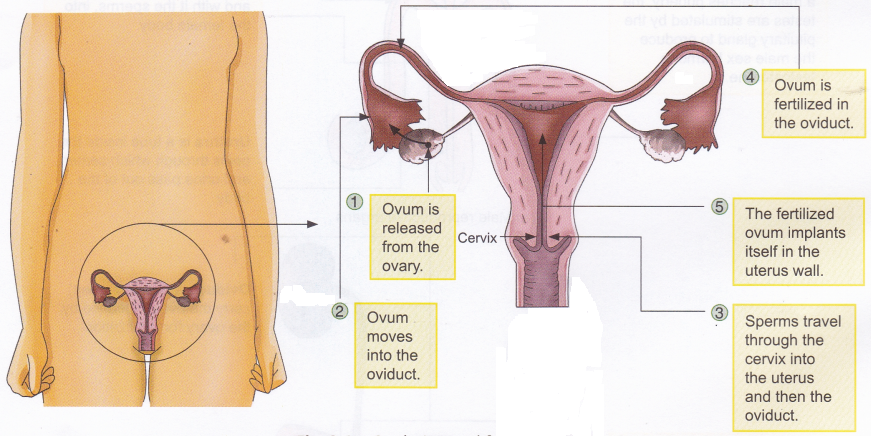What is Reproduction in Humans
Reproduction in Human Beings
In human beings and almost all mammals, the reproductive systems in males and females are different, with different organs performing specific functions. Before we learn about the male and female reproductive organs in detail, let us understand the basic process of reproduction.
Both males and females have special reproductive cells called gametes. The female gamete is usually called an ovum (or egg) and the male gamete is called a sperm.

The two gametes join or fuse during a process called fertilization. This initiates the formation of a baby. An overview of the different stages of reproduction in human beings is given below.

Read More:
- Vegetative Reproduction in Plants
- Different Types of Asexual Reproduction
- Sexual Reproduction in Flowering Plants
- Viviparous Reproduction
Male and Female Reproductive Organs
Let us now understand the structure and the functions of male and female reproductive organs.


Fertilization
The fusion of male and female gametes to produce a new organism is called fertilization. The main
stages of fertilization in human beings are listed below.
- Once a month, an ovum is released from the ovary by a process called ovulation.
- The ovum moves into the oviduct (fallopian tube).
- During sexual intercourse, the male transfers sperms in the vagina through the penis. The sperms travel through a narrow opening called cervix into the uterus and then the oviduct.
- A single sperm fuses with the ovum in the oviduct and fertilization takes place. The fertilized ovum continues its journey down the oviduct, into the uterus.
- The fertilized ovum implants itself into the uterus wall and develops into a human embryo.
This process is summarized in Figure

There are two types of fertilization: internal and external.
- Internal fertilization: In this type of fertilization, the fusion of male and female gametes occurs inside the female’s body. Mammals like cow, horse, dog, cat, and human beings are examples of organisms that reproduce by internal fertilization.
- External fertilization: In this type of fertilization, the fusion of male and female gametes occurs outside the body. Fish, frog, and starfish are examples of organisms that reproduce by external fertilization.
In vitro fertilization (IVF) is a technique in which the sperm and ova are combined in a laboratory dish. After fertilization, the embryo is transferred into the woman’s uterus. Babies conceived through this technique are called test tube babies.
Activity
Aim: To observe a fertilized egg of a hen
Materials needed: Some farm eggs and a torchlight
Method: Place a few farm eggs in a dark room and, using a torchlight, try to observe which of them show a tiny blood vein (reddish in colour) through the yolk. You may need to examine quite a few to find a fertilized egg.
Observation: A fertilized egg will show a tiny blood vein (reddish in colour) through the yolk.
Note: Handle the eggs carefully so as not to disturb the babies developing inside.
